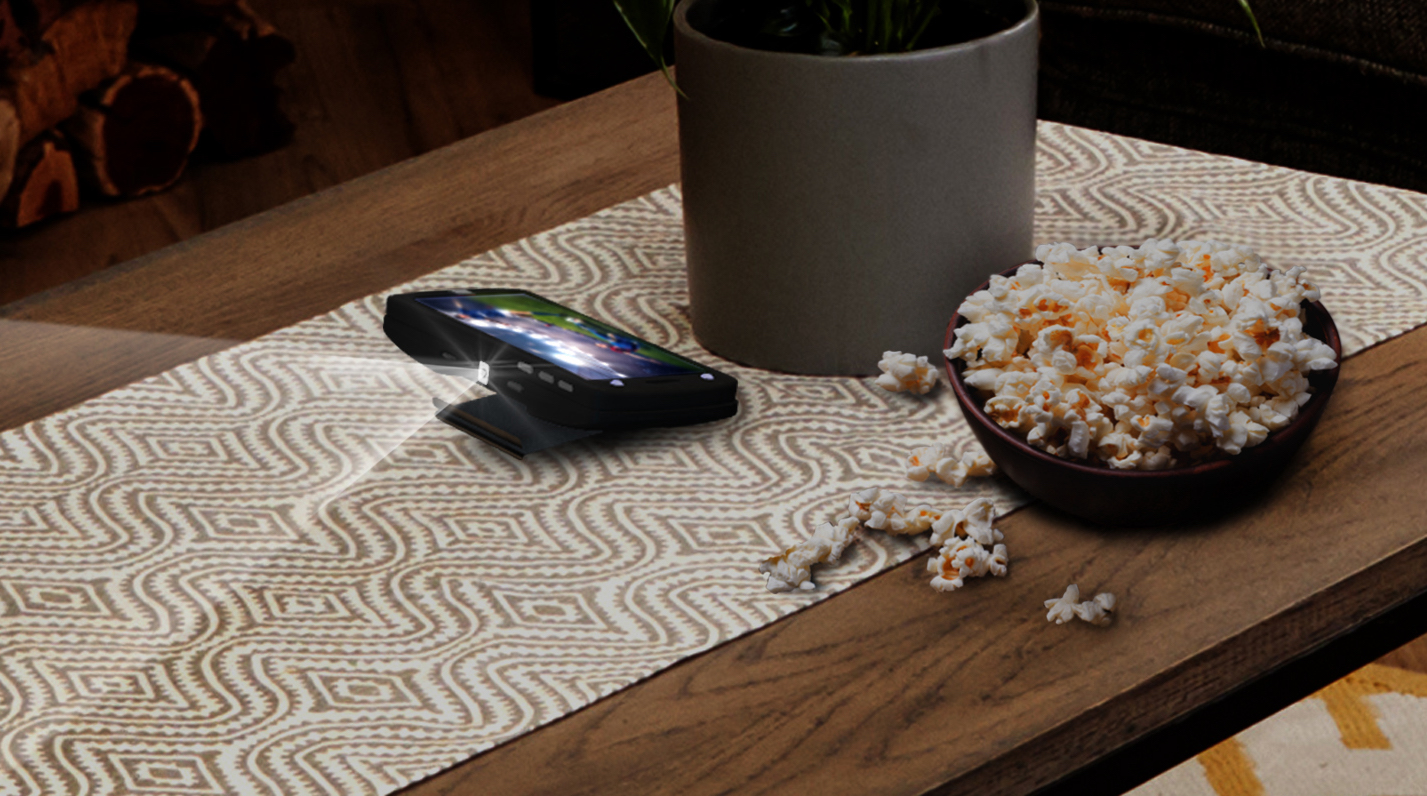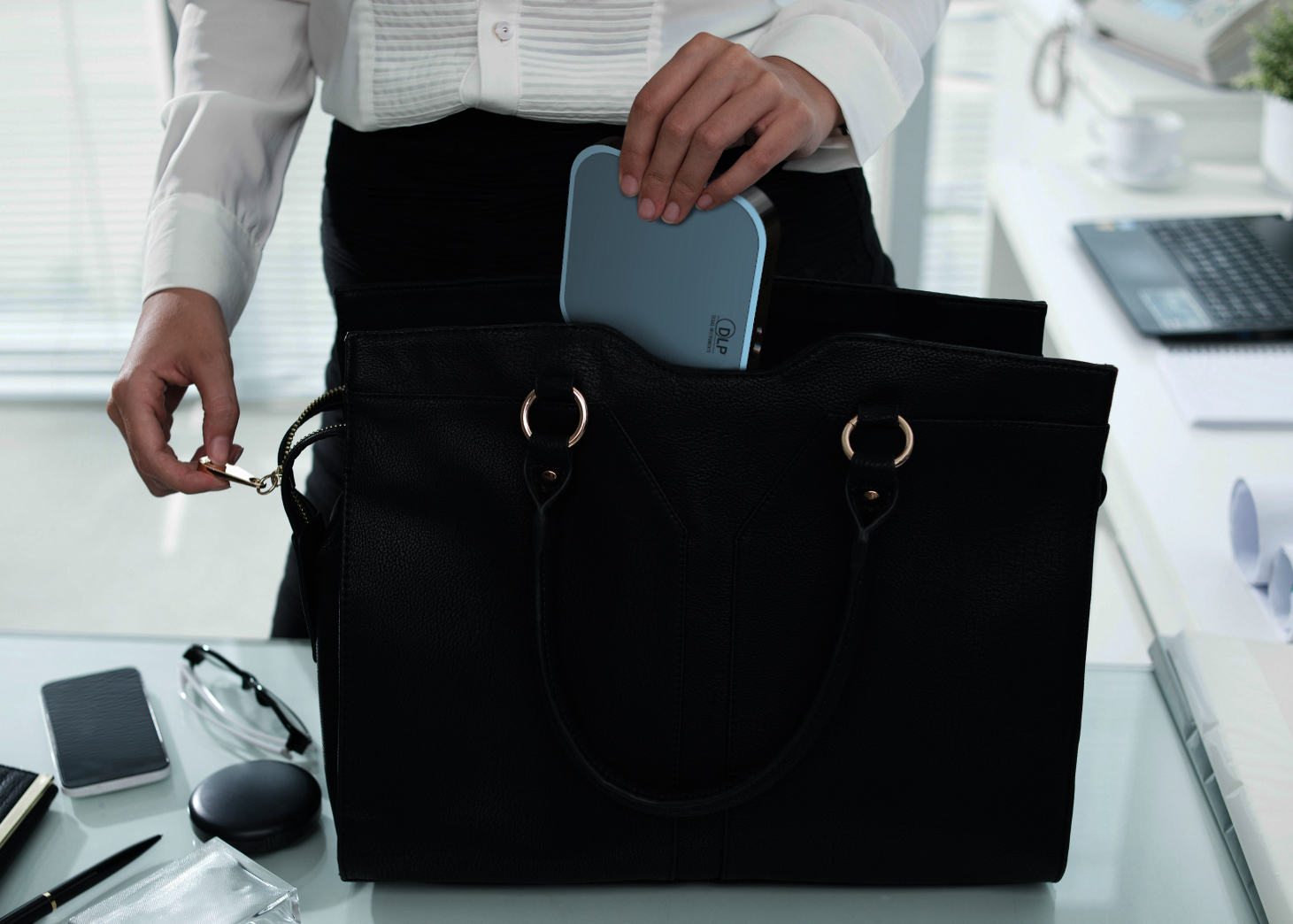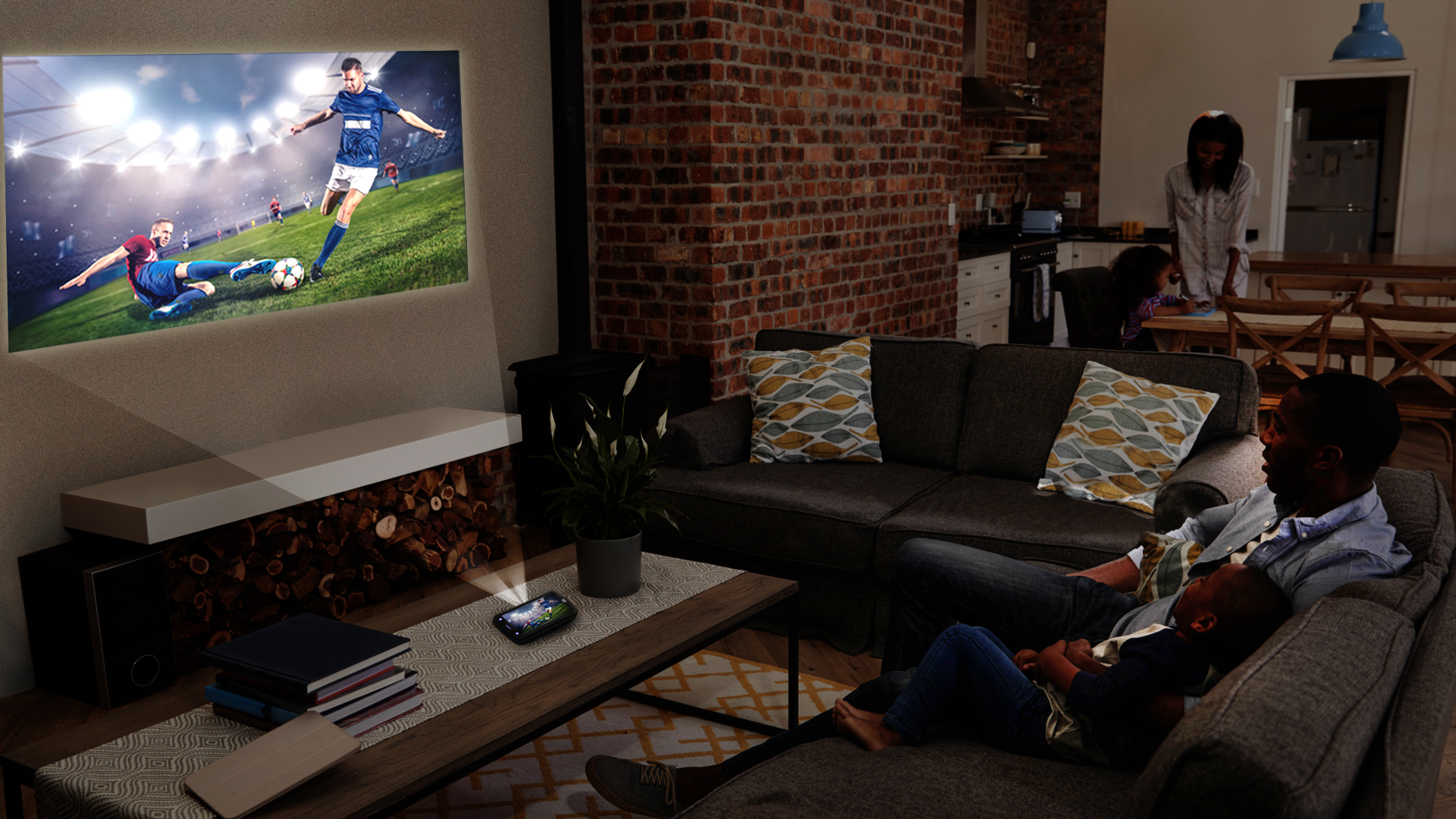DLPY011 September 2022 DLPC3430 , DLPC3432 , DLPC3433
- At a glance
- Authors
- 3
- Smartphone companion projectors: a big-screen experience, anywhere
- Smartphone companion projector benefits
- Technological advancements impacting smartphone companion projectors
- TI DLP Pico technology
- RGB LED illumination
- DLP Pico technology for smartphone companion projectors
- Smartphone companion projector design and tradeoffs
- Size and weight
- Brightness
- Resolution
- Battery life
- Connectivity options
- Product development and supply chain
- Conclusion
Smartphone companion projector benefits
There are three key benefits of smartphone companion projectors:
- Shared big-picture
experiences. A larger image size enables a more comfortable extended
viewing experience. Rather than having to gather around a small phone screen, a
projected image enables more viewers to watch and be farther away from the
display. While a smartphone screen is typically held at an arm’s length or
closer, a smartphone companion projector (see Figure 2) can create an image size as large as 50 inches diagonally in a dim room,
enabling a viewing distance of 6 feet or more from the projection surface.
 Figure 2 An example of a
smartphone companion projector.
Figure 2 An example of a
smartphone companion projector. - Portability. Smartphone
companion projectors are typically small enough to easily fit in a pocket or a
bag, as shown in Figure 3. With such a small form factor, users can bring a big picture experience
anywhere they go. Battery-powered smartphone companion projectors enable
cable-free viewing experiences when a power outlet is not conveniently
located.
 Figure 3 Smartphone companion
projectors can act as portable displays for travelers.
Figure 3 Smartphone companion
projectors can act as portable displays for travelers. - Flexible viewing surfaces.
Smartphone companion projectors can use a variety of surfaces as projection
screens as long as the surface’s color, uniformity and glossiness are
acceptable. While the most common viewing surface is an interior wall, as shown
in Figure 4, ceilings or home exteriors can also be used.
 Figure 4 Enable displays on
blank walls with a smartphone companion projector.
Figure 4 Enable displays on
blank walls with a smartphone companion projector.